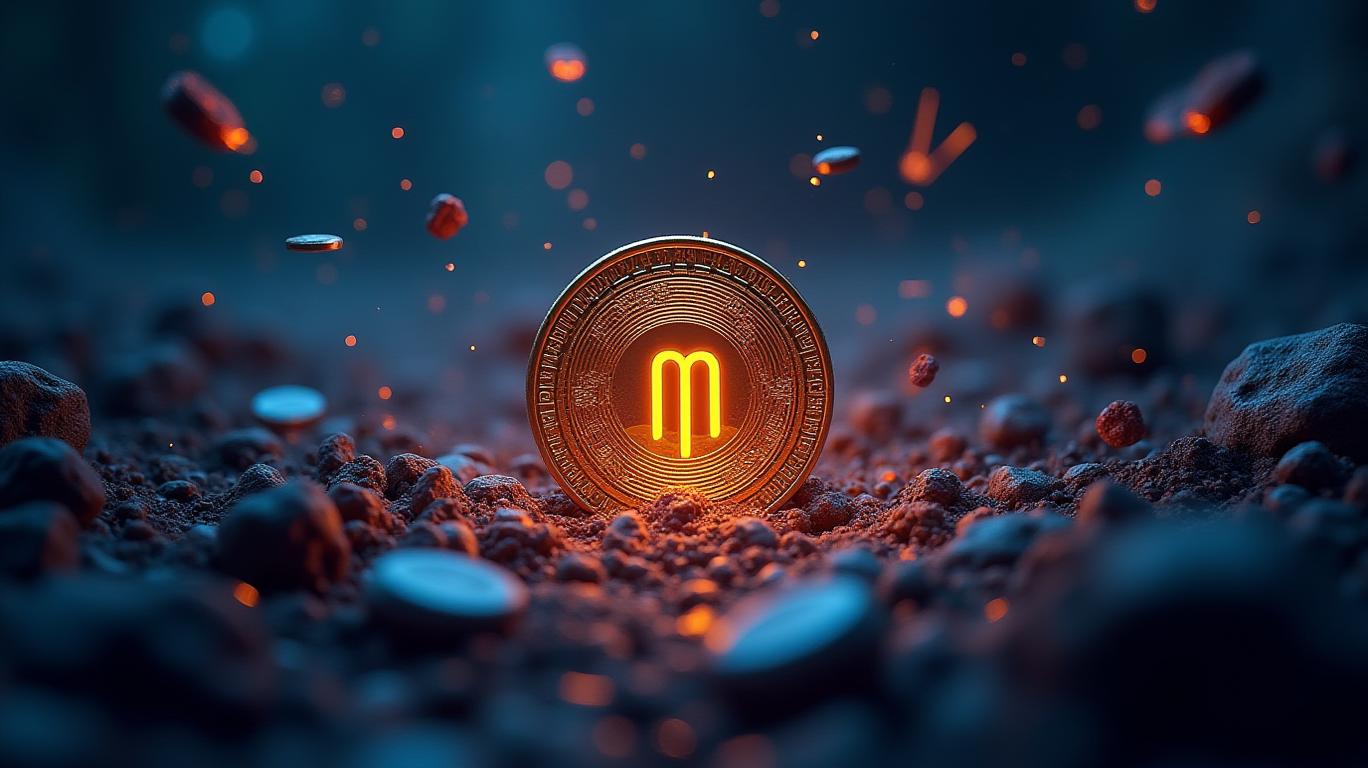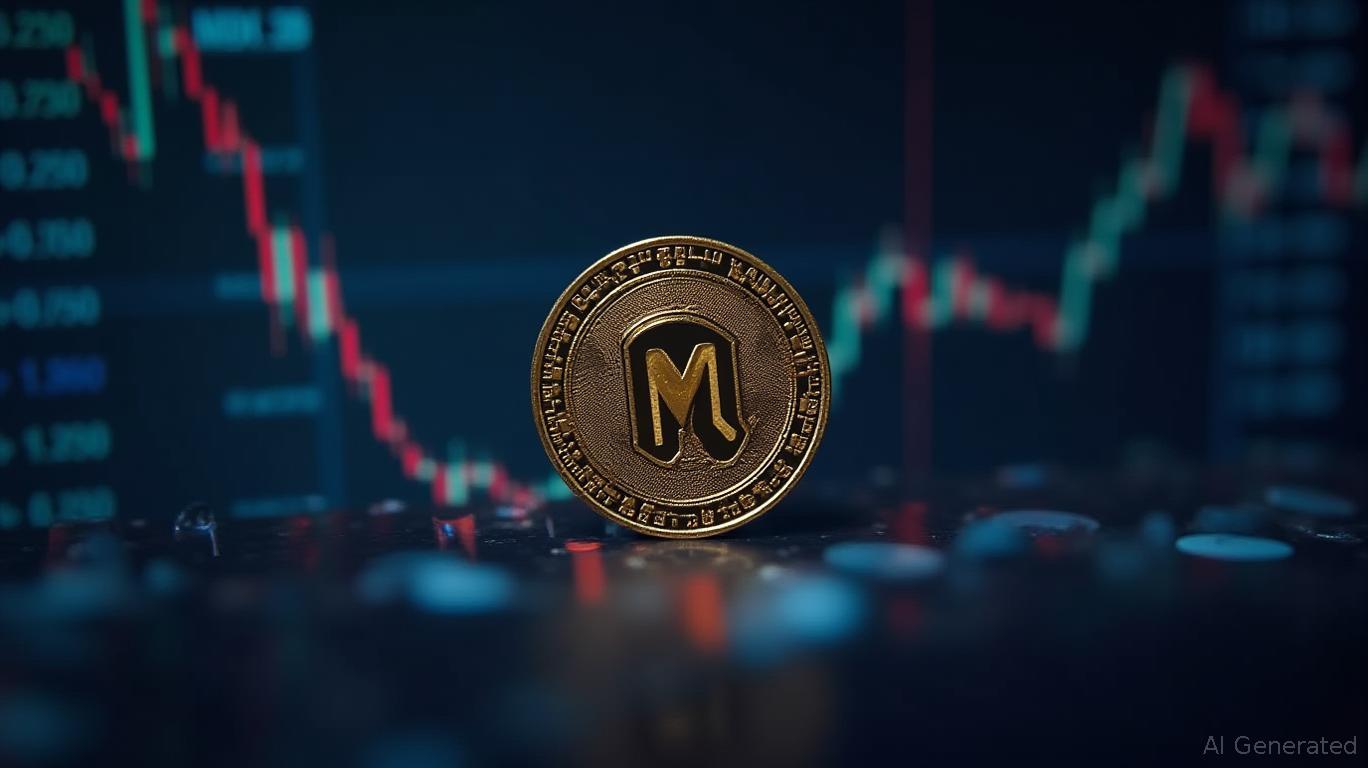MANTRA’s OM Token Plummets 90% in Hour, Losing $5.5 Billion
MANTRA’s token, OM, experienced a catastrophic price collapse on Monday, plummeting over 90% in under an hour and wiping out over $5.5 billion in market capitalization. The sudden crash took OM from a high of $6.33 to below $0.50. This dramatic drop raised immediate red flags about potential insider activity and price manipulation, as the MANTRA team allegedly held nearly 90% of the total token supply. On-chain data revealed a deposit of 3.9 million OM tokens to the OKX exchange from a wallet linked to the MANTRA team, which immediately sparked concerns about a large-scale sell-off.
Ivo Grigorov, CEO of Credefi, commented on the situation, stating that the lack of transparency and high concentration risk in the token's supply could trigger panic in the market. The token suffered a rapid wave of forced liquidations amounting to $66.97 million in only 12 hours, further precipitating OM’s downfall. The MANTRA team reportedly maintained significant control over OM’s supply, holding as much as 90%—approximately 792 million tokens—in a single wallet. Consequently, only a small fraction was available for public trading, rendering the token susceptible to substantial selling pressure and raising sharp concerns over insider activity.
Following Monday’s event, investor confidence in the MANTRA project remains severely damaged. QuantHive, an AI trading platform, identified a significant shift in sentiment around the OM token. Alpha wallets, which were previously net accumulators of OM, signaling confidence, have since sold over $2.5 million in OM versus $1.6 million bought in the last 48 hours. This pivot suggests a coordinated exit, possibly indicating a lack of confidence in the recovery of the project among seasoned players. Despite the heightened interest in the OM token, sentiment remains bearish, with the platform’s flow sentiment signal shifting to Fear, Uncertainty, and Doubt.
During the MANTRA episode, a substantial sell-off occurred, seemingly initiated by significant disposals from large holders. Blockchain analytics firm Lookonchain tracked at least 17 wallets that collectively deposited 43.6 million OM tokens, valued at $227 million, onto exchanges starting April 7. This volume constituted 4.5% of OM’s circulating supply, highlighting a major offloading event by key investors. Felix Huang, QuantHive’s Marketing & Community Lead, believes this data is significant, showing that whales are reducing their exposure to MANTRA. The long-standing increase in concerns about the project’s fundamentals made this conclusion easy to digest.
In the last year, accusations have emerged that MANTRA’s team manipulated the token’s price using market makers, altered the token’s economic structure, and repeatedly postponed a community airdrop. Reports have also surfaced indicating that MANTRA potentially engaged in undisclosed over-the-counter (OTC) deals, offering tokens at substantial discounts, including instances where they were sold for half their market value. This week’s events have fundamentally altered the outlook for the project’s sustainability. Grigorov noted that such a collapse doesn’t happen overnight and reflects deeper concerns that had been building over time. The inherent lack of public disclosure also permanently damaged public trust in the project.
Denis Petrovcic, CEO and Co-Founder of Blocksquare, emphasized fostering open, honest, and consistent communication with the community. He stressed that once trust is broken, even small events can spark outsized reactions. The fact that the project’s leaders held almost the entire token supply quickly unleashed suspicions of insider trading. Grigorov added that this is one of the biggest vulnerabilities in crypto, especially in sectors like RWA where trust with serious capital is crucial. If a team holds too much supply, they don’t just carry market risk—they carry narrative risk. Even the perception of insider activity can spook users.
Despite the severity of the MANTRA crash, industry leaders remain optimistic about the prospects of the RWA industry. Grigorov and Petrovcic view MANTRA as a hiccup in the development process of tokenized assets, with their integrity remaining intact. Grigorov stated that the incident is a blow to one project, not to the concept of RWA as a whole. Petrovcic echoed this sentiment, arguing that while short-term confidence could be affected, the broader RWA market is not facing a systemic risk. The sector’s overall momentum and potential are evident in its key metrics, with the total market capitalization of RWA coins currently exceeding $34.5 billion, and nearly $2 billion traded in the last 24 hours.
For Petrovcic, the key lesson from the MANTRA situation is the necessity of earned, publicly verified trust in Web3 instead of relying on centralized entities for a decentralized financial future. He stresses that transparency, demonstrated by clear token allocation, long-term vesting, and open communication, is crucial for building this trust. Grigorov shared a similar opinion, highlighting the need for effective communication. He noted that if a team is moving large volumes of tokens—even if it’s for operational reasons—they need to explain it ahead of time. Accountability doesn’t just mean doing the right thing internally—it means showing that to the public. This highlights the importance of predictable token release schedules, public wallet tracking, and, ideally, the gradual handoff of control to decentralized governance as the project matures.
The MANTRA incident undeniably sent shockwaves through the cryptocurrency market, starkly reminding investors of the risks associated with opaque practices and concentrated token ownership. The broader future of the RWA industry, however, remains bright. The sheer scale of the sector market illustrates the genuine interest and ongoing development within this sector. While painful for those directly affected, the MANTRA episode is a critical learning opportunity. It highlights the distinction between projects driven by sustainable fundamentals and those susceptible to hype and mismanagement. Moving forward, the significance of the MANTRA incident lies in the invaluable lessons it provides for the RWA space. By diligently applying these lessons, the RWA industry can mitigate the risks of similar episodes in the future, enhance investor confidence, and ultimately realize its vast potential.



_442a2dcc1749832873286.jpeg)
_e68fac6d1749831664430.jpeg)


























